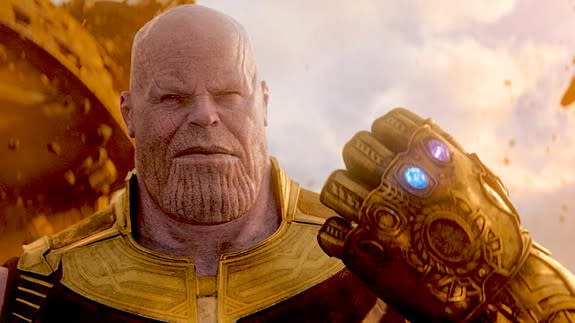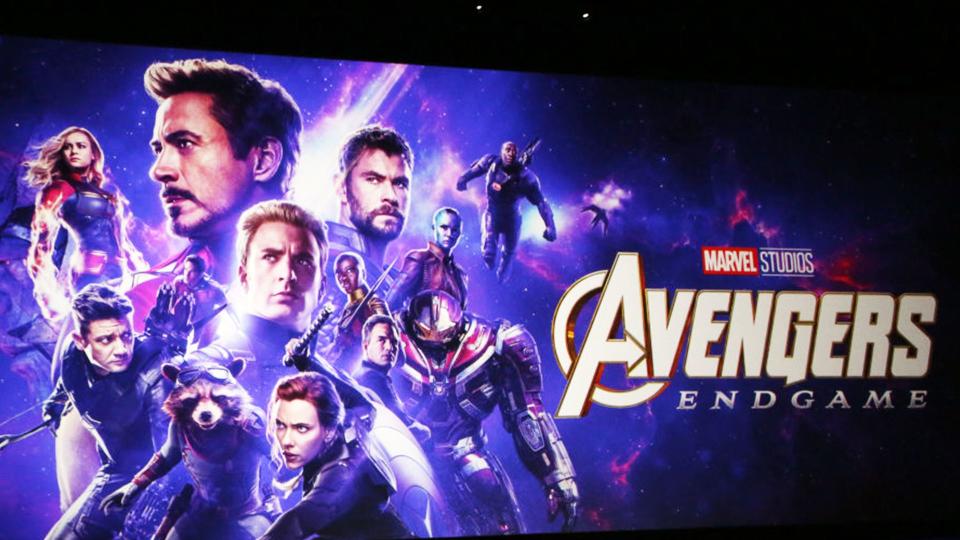The Thanos snap for real: Let's remove humans from half of Earth

Don't worry, this post is free of Avengers: Endgame spoilers.
Avengers: Endgame hits theaters this week, which means we're about to find out how Earth's greatest superheroes can reverse the destructive actions of the galaxy's most misguided environmentalist.
Thanos of Titan, the ultimate big bad in the Marvel Cinematic Universe, assembled the all-powerful Infinity Stones in his Infinity Gauntlet so he could eradicate 50 percent of all life in the cosmos, chosen at random, by snapping his fingers. This demi-genocide, he reasoned, would leave the remaining population with such abundant resources that there would be no more war, no more famine, no more societal collapse.
After Infinity War, I wrote about how Thanos made the same mistake as philosopher Thomas Malthus, who didn't think our ability to grow food would keep pace with a rising population. (Spoiler: It did.) There are many other ways in which the big purple guy didn't think his plan through: Experts say it would cause the collapse of entire ecological systems, not to mention messing with the gut bacteria we can't live without.
And of course, if Thanos were really so concerned about limited natural resources, he could have just snapped his fingers and doubled them instead.
But there is a surprising similarity between Thanos' goal and one of the most ambitious environmental proposals on the table — one that could help reverse climate change and prevent species extinction. Instead of wiping out half of all the humans on Earth, let's remove all human activity from half of the Earth's surface.
As extreme as that sounds, the Half-Earth Project is for real. It comes straight from one of the most respected names in biology, the multi-award-winning scientist and author E.O. Wilson. Building on a phrase coined by a Smithsonian magazine writer, Wilson published Half Earth: Our Planet's Fight For Life in 2016, and established the Half-Earth Project the following year. He was spurred on by the estimate that half of all species on Earth will be extinct by the end of the century.
In other words, we're already living through a slow-motion Thanos snap — no supervillain required.
Given the scale of the crisis, Wilson writes, "conservationists haven't been thinking big enough." Some 15 percent of the planet's land and about 4 percent of its oceans are currently under some form of government protection, meaning you can't fish or farm or develop there. If we can bring that number up to 50 percent of land and ocean, Wilson believes, then we should be able to avert a major mass extinction — and still have 85 percent of our current roster of species around in 2100.
How realistic a goal is that? More than you might think — largely because we don't need as much space as you might expect.
Cities take up a mere 3 percent of the planet's land surface, even though more than half of the world population now live in them. Even as suburban sprawl grows, we are becoming more compact overall: a 2008 study found 95 percent of humanity lives on 10 percent of the available land.
So what's taking up the remaining space? Well, of the 104 million square kilometers of habitable land on this planet, agriculture takes up a stunning 51 million square kilometers. But not all farmland is created equal: 40 million square kilometers is just for livestock, mostly cattle.
The vast majority of our diet comes from crops, which need only 11 million square kilometers — and even less in the future if vertical farming, aka food grown in skyscrapers, takes off.
We have transformed the entire surface of the planet — clear-cutting forests, fencing off swathes of acreage, killing off habitats for untold numbers of animals — because we are addicted to eating burgers alongside our fries. If the whole world ate like China or India, with their mostly plant-based diets, we could return more than half of all agricultural land to nature tomorrow.
The rise of the Impossible Burger, and similar plant-based fake meat that is starting to become indistinguishable from the real thing, can't come soon enough.
So how can we help, other than eating less beef and dairy? The Half-Earth Project is still in its early stages; its most important work at the moment involves creating maps of the areas where we can save the most species if we preserve them from human development now. We urgently need more national parks, more wildlife preserves, more marine conservation areas.
Wilson sees a future where most towns and cities are surrounded by national parks, which sounds pretty good to us. He also envisions the parks linking up, so that animals have unbroken "corridors" that run north to south and east to west. Corridors would allow them to migrate without running into those dangerous, pesky human habitats.
We can lobby government organizations at all levels — local, state, federal, international — to preserve as much land as possible, and to ban fishing trawlers from large swathes of international waters. We can shame billionaires into using their wealth to buy acres of land and return it to its natural state. And we can crowdfund such ventures, too. The Children's Eternal Forest in Costa Rica, which was started with just $18,000 ($55,000 in today's money) raised by Swedish schoolchildren in the 1980s and is now 54,000 acres, can be a model of the future.
Earth desperately needs its own avengers to head off this real-life Thanos snap with a more benign 50 percent reduction. You can be one of them.
WATCH: 'Avengers: Endgame' is smashing pre-sale box office records


